Norwegians have the Sea in their Blood
By Wendy Laursen, Maritime Executive
Jon Amtrup sails where the sun never sets, and he skis where the ice-covered slopes meet the sea. He is an adventurer and also a proponent for the protection of the beautiful wild places he visits. “I am very concerned about all the plastic we dump in the oceans. The most visible effect of it is all the rubbish on the beaches. But the scariest part is that the micro plastic end up fish and birds. It kills valuable life at sea. This is an area where I think the man in the street can make a difference: Use as few plastic bags as possible, and always use the few you have to use more than one time. Be aware of products that contain plastic, and try to avoid them. Always pick up plastic or garbage that you find in the water and on the beaches.”
Even in the wild Arctic is not immune from the problem, and Jon sees evidence of human disregard increasingly on his journeys. He aims to instil a sense of responsibility in those that accompany him.
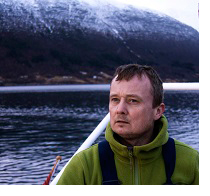 One of the most picturesque adventures he went on this season was to Greenland. “The area around Angmassaliq offers all a high latitude sailor can ask for. Solitude, icebergs in all shapes and sizes, local Inutits with a story to tell, and fantastic possibilities to explore the landscape on foot and in kayaks. One of the most picturesque adventures he went on this season was to Greenland. “The area around Angmassaliq offers all a high latitude sailor can ask for. Solitude, icebergs in all shapes and sizes, local Inutits with a story to tell, and fantastic possibilities to explore the landscape on foot and in kayaks.
“I was out paddling on my own in Johan Petersons Fjord. Blue skies, icebergs all around, not a breath of wind. Not a sound. Until a 30 ton humpback whale breached just ten meters in front of me. The whale was coming my way and my heart was racing. But these giant animals don’t bother with a Norwegian in a kayak. He breached two more times as he passed me a couple of meters away. The he dived in to the great depths looking for squid to feast on. I was left in the total silence listening to my still racing heart. Did it really happen?”
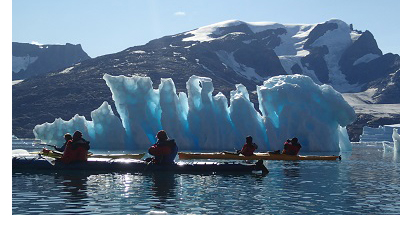 For this trip, Jon had a scientist on board. All expeditions should have a scientist, he says. “Mikkel Vilumsen is a renowned whale scientist and the purpose of the trip was to tag whales with GPS senders so that we could get better knowledge about whale migration. We managed to tag two humpback whales, and the close encounter when we sailed up alongside the whale and Mikkel attached the GPS with a long spear was truly amazing. The first whale soaked us completely with his tail.” For this trip, Jon had a scientist on board. All expeditions should have a scientist, he says. “Mikkel Vilumsen is a renowned whale scientist and the purpose of the trip was to tag whales with GPS senders so that we could get better knowledge about whale migration. We managed to tag two humpback whales, and the close encounter when we sailed up alongside the whale and Mikkel attached the GPS with a long spear was truly amazing. The first whale soaked us completely with his tail.”
Jon is Norwegian, and like most Norwegians he has a strong connection with the sea. “From the beginning of time we have always used the ocean to fish, hunt and to get out in to the world. All Norwegians have at least one in the family that either is or has been a fisher, seaman, offshore worker, sailor, ship builder or other sea related occupation.”
 Sailing along Norway’s coast there are houses in the most extraordinary places. Fishermen built houses on small low lying island far out to sea to be close to the fishing fields. Farmers found a green hillside in a fjord and set up their house where now road will ever be built. The remoteness and the cold climate affected the Norwegian food tradition with delicatessens such as fermented fish and smoked sheep head, with eyes and all. Sailing along Norway’s coast there are houses in the most extraordinary places. Fishermen built houses on small low lying island far out to sea to be close to the fishing fields. Farmers found a green hillside in a fjord and set up their house where now road will ever be built. The remoteness and the cold climate affected the Norwegian food tradition with delicatessens such as fermented fish and smoked sheep head, with eyes and all.
Jon sails in a yacht, insulated for year-round sailing. “Last winter we had -20 degrees Celsius, and I was enjoying life inside the boat bare feet and in T-shirt.”
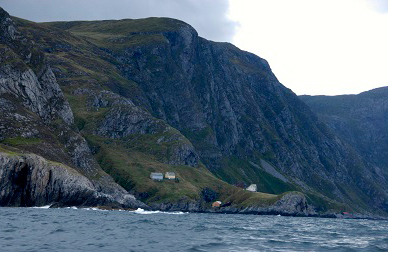
The boat is set up for long distance sailing. Every February (winter in Norway) he starts sailing up along the west coast of Norway. “The snow is all the way down to the beach, and we have our skis with us. We use randonee skis and walk from the beach to the top of the mountain – usually between 1,000 and 1,800 metres above sea, and ski down again.”
Randonee skiis have specialized bindings and skins held on the bottom of the skis to hold the skis from sliding back down as the skier glides forward up a slope. Once the skier reaches the desired altitude the skins are removed and the bare skis are used to descend.
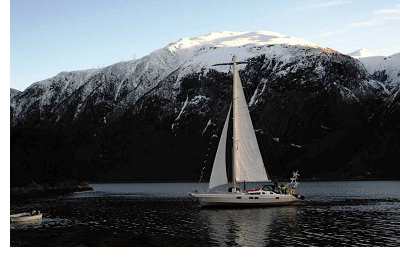 “We sail in to Fjords like Hjørundfjorden where there are few locals, some shops and a village that has no road connection, but a fascinating bar. The parties at that place always turn epic.” “We sail in to Fjords like Hjørundfjorden where there are few locals, some shops and a village that has no road connection, but a fascinating bar. The parties at that place always turn epic.”
Jon’s tours attract those looking for excitement, but Jon intends to never use the safety equipment on his yacht. “It’s all about taking the right decision, and by knowledge it will be easier to take the right decision that will let you explore both the oceans and yourself.” Together with Bob Shepton and a lot of other experienced high latitude sailors he has compiled that knowledge in to a useful how-to book with advise about clothes, how to handle ice, permissions, weather, safety and much more. “I hope that High Latitude Sailing – How to sail the cold waters of the world can inspire more sailors to venture out in the remote areas of our planet.”
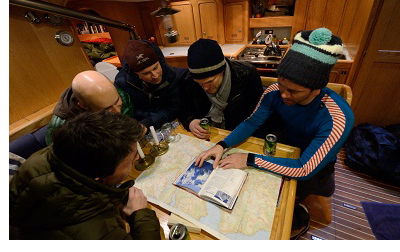 The remote Arctic areas that Jon visits are changing fast, and he is worried. “The whole Arctic is changing due to climate change. We have warmer winters and more extreme weather as a consequence. I know we are heading for a warmer and more extreme climate, and I hope that the politicians will be brave enough to take the thoughtful choices. It’s we the voters who have to give the politicians that courage by voting for the right politicians and expressing our concerns often and through the right channels. The remote Arctic areas that Jon visits are changing fast, and he is worried. “The whole Arctic is changing due to climate change. We have warmer winters and more extreme weather as a consequence. I know we are heading for a warmer and more extreme climate, and I hope that the politicians will be brave enough to take the thoughtful choices. It’s we the voters who have to give the politicians that courage by voting for the right politicians and expressing our concerns often and through the right channels.
“The Norwegian welfare state is built on the oil resources we are so lucky to find and exploit. Now, the same oil and willingness to pump more oil out of the seabed is threatening to destroy a lot more than it has built up. Unluckily for us, and the world, we have a government that speaks about the importance of climate change, while at the same time aggressively opening up new areas for the oil companies in the vulnerable Arctic.
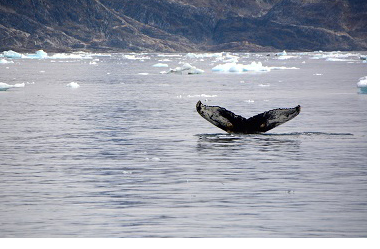 “Climate scientist has said that we have to leave most of the oil in the ground to avoid serious climate change. It is very disturbing that the government of one of the wealthiest states in the world says (at least with their actions) that this doesn’t apply to us; other nations oil resources have to stay in the ground. It’s not fair, it’s not sustainable, and even my eight year old daughter sees the total lack of logic.” “Climate scientist has said that we have to leave most of the oil in the ground to avoid serious climate change. It is very disturbing that the government of one of the wealthiest states in the world says (at least with their actions) that this doesn’t apply to us; other nations oil resources have to stay in the ground. It’s not fair, it’s not sustainable, and even my eight year old daughter sees the total lack of logic.”
Jon Amtrup has circumnavigated Svalbard, crossed the Atlantic twice and the North Sea ten times, and cruised extensively in the high latitudes along the Norwegian coast summer and winter. He is the author of Sail to Svalbard, Harbour Guide Bergen-Kirkenes and the authorized sailing biography of HMK Harald V of Norway. He is a member of The Explorers Club and Royal Geographical Society.
TOP
|